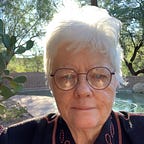The Hyperloop Supersonic Train: the Hot New Idea of 1909
by John S. Lewis, Professor Emeritus of Planetary Science, University of Arizona, in his blog from May 2015 (posted with permission by Peg Lewis, author).
Some people are just way ahead of their time. Leonardo drew plans of helicopters and submarines in 1515; Konstantin Tsiolkovskii wrote of exploiting asteroid resources in 1904. Now another visionary, Elon Musk, has proposed a supersonic train operating inside an evacuated tunnel, serving the San Francisco-Los Angeles corridor. This technically demanding scheme seems fated for development many years in the future.
But let us turn to the November 1909 issue of Scientific American. (No, not 2009!) In that issue we find an editorial, “The Limits of Rapid Transit”, based on an essay written in 1904 by an undergraduate at Worcester Polytechnic Institute and submitted to Scientific American earlier in 1909, advocating the building of a supersonic rail system serving the Boston-New York-Philadelphia-Baltimore-Washington corridor. High speeds are achieved by running the hermetically sealed train inside an evacuated tunnel. Sound familiar? If Musk is a certified visionary for proposing this concept in 2012, what would we call the lad who advocated the same idea in 1909?
The precocious lad in question was none other than Robert Hutchings Goddard, father of American rocketry, the first in the world to build and fly liquid fuel rockets. He was also the first to discuss putting astronauts in suspended animation for prolonged space voyages, and the first to propose the use of gyroscopes to stabilize aircraft — and all of these visionary ideas originated while he was still an undergraduate.
One other coda to append to this story: the website “Russia beyond the Headlines” attributes the origin of the supersonic train idea to one Boris Weinberg of Tomsk, who published the idea in an article entitled “Motion without Friction” in 1914. The website reports that Weinberg carried out tests of his device in which speeds of 6 km per hour were achieved. (Six km per hour is 3.6 miles per hour, the speed of a brisk walk.) Only in Russia is 1914 earlier than 1909, and only in Russia is walking speed supersonic. Oh, by the way, in 1914 it wasn’t Russia, and certainly not the Soviet Union: it was the Russian Empire. For your amusement, the puff piece can be read at:
This is one of a series of retrospective blog posts from beloved author and scientist John S. Lewis, one of the youngest professors ever hired by MIT back in 1968 when he was 27. The class laughed when he got up to mock professorial gestures with a piece of chalk, only to find that he was their professor. He went on to become one of the leaders in the infant field of planetary sciences and later, asteroid mining to facilitate our entry into space.
He is the author of several science fiction books as well as Mining The Sky and Rain of Iron and Ice, a pair of popular-science books for lay readers.
